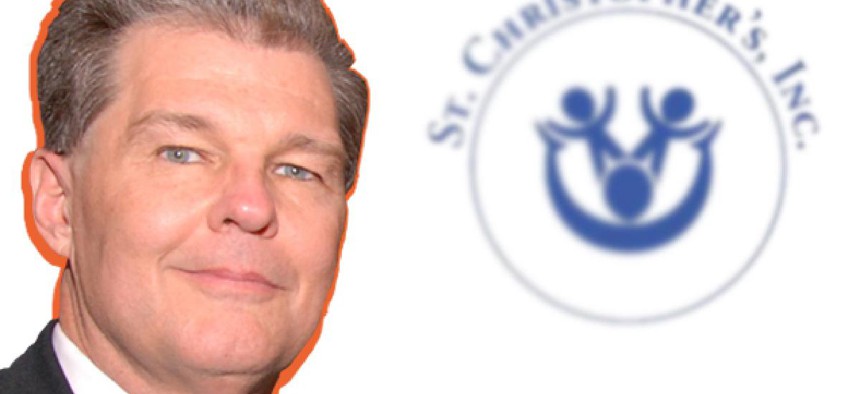What I observed over my three decades-long career in child welfare services, Part I

Illustration by Zach Williams/ NYN Media
Editor’s Note: This is the first part of a two-part article by Dr. Robert Maher. He recently retired from his position as CEO of St. Christopher’s, a nonprofit that provides education and life planning skills to children with special needs and their families. Here is a link to Part II.
In 1974 I began my career in the field of child welfare at St. Joseph’s Home in Peekskill, where I was initially hired as an outdoor education teacher, later as a youth care worker and finally as a social worker. When St. Joseph’s Home sadly closed in 1978, I left the field to accept a position as a public school teacher in the Lakeland Central School system. However, after a wonderful thirty plus year career in public education, I had a strong desire to return to my “roots” of caring for children who had been abandoned, abused, neglected and otherwise forgotten. In 2004 after a great stint as the principal of Briarcliff High School – which had been named as one of the top high schools in America for five consecutive years – I became the school superintendent of the Greenburgh-North Castle Union Free School District. It is the educational partner of St. Christopher’s, Inc., an over 130 year old residential treatment facility for youth with special needs. After several years of being school superintendent, I was asked to become the CEO of St. Christopher’s and for almost three years I handled both the CEO and school superintendent roles – until I was fortunate enough to engage Dr. Edward Placke, currently the CEO of Green Chimneys, as the GNC school superintendent.
Some 26 years had elapsed between the time I left St. Joseph’s Home in Peekskill in 1978 and when I began working at GNC and St. Christopher’s, in 2004. Sadly, it was my perception that not much had changed in the field. While there were established benchmarks and accountability standards in 2004 that really didn’t exist in 1978, I was still not convinced that most agencies or their governing bodies (OCFS, ACS, etc.) genuinely thought about what was really best for the children we were entrusted to care for.
It then became my mission as the leader of GNC UFSD and St. Christopher’s to make certain things changed for the better.
From the 1980s education study, “A Nation At Risk - The Rising Tide of Mediocrity” to “No Child Left Behind” and “Race to the Top” the message was clear: ‘Either raise standards and expectations or risk falling far behind the rest of the world in caring for this disadvantaged population of children.’ After the report appeared, some attempts to improve the status-quo were made, but for the most part, it all just continued at the same slow pace it had traveled at for such a long time. The primary focus remained on putting a tremendous amount of resources and assets into clinical services for children and their families and supporting the health and safety of residential care - all of which is very important - without putting the appropriate level of focus on education.
In most institutions prior to the last 5 years, few if any students took enough of the requisite Regents curricular courses to stay on grade level – let alone graduate. In some cases there has been less than a 26 percent high school graduation rate. That is why St. Christopher’s, Inc. and Greenburgh-North Castle Union Free School District have stood head and shoulders above most – achieving over an 80 percent graduation rate for almost 10 years.
Now, New York, like many other states, has set higher standards than ever and coupled them with an implementation timeline that insists on almost a full sprint from start to finish.
For the past twenty-five years, I have worked with children in the capacity of coach, adviser, teacher, dean, assistant principal and principal. Although I always knew that I was destined to work with children, it wasn't until I took my first administrative course that I truly understood how concern for children should influence every educational decision made.
On the first day of my first graduate level course, the professor gave a slide show. The first slide showed an administrator observing a new teacher's classroom. The second slide was a crayon picture of a child-like stick figure drawing accompanied by the professor saying, "Always remember the child." The third picture showed an administrator working on a budget. The fourth slide was the crayon picture of the child the same one we saw earlier. Once again, he said, ''Always remember the child." The slide show continued with close to 100 slides. Every other slide was the crayon drawing of the child. Each time the drawing of the child appeared, the professor repeated his admonition.
About midway through the slideshow almost every student in the class was becoming annoyed. Near the end of the slide show, one member of the class had reached his frustration limit and shouted out, "We get it. Remember the child! We're not stupid you know!" The professor just smiled and said, "I know that. It is just that most administrators, although well intentioned, sometimes forget why they went into the business in the first place. If you remember the child and factor the child into every educational decision you will ever make, you will never lose your focus or your way."
Dr. Robert E. Maher is the former CEO at St. Christopher’s and the former superintendent of the Greenburgh-North Castle Union Free School District. Prior to assuming a leadership role at the school district, Maher served as the principal of Briarcliff High School for 10 years.
NEXT STORY: NYC public employees need paid parental leave